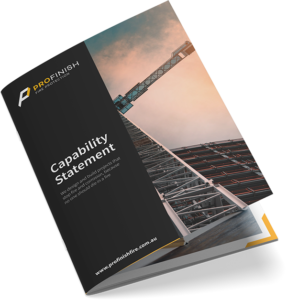If you want to eliminate passive fire defects in your build, passive fire protection must be designed into your build as soon as planning begins. This means involving a passive fire protection provider from the very start.
Architects are not passive fire experts
Even when architects have a solid understanding of building authority guidelines and endeavour to meet the latest safety standards, they are not specialists in fire protection. This means that they can possibly overlook the specifications necessary to meet fire safety codes during the design phase.
These oversights on your site can be costly, especially when it comes to fixing passive fire defects down the track. If defects are determined after a build’s completion, retrofitting or deconstructing any part of the build could disrupt your schedule and blow out your build budget.
While architects and fire engineers can specify the code that needs to be met, they cannot provide you with actual tangible passive fire solutions or recommend the correct material required.
Even when fire engineers are involved at the start of a project, they may design solutions and drawings, but not have a full understanding of the products and their limitations, or how to read the test reports.
Involve a passive fire specialist as soon as possible
General design defects are unfortunately all too common in construction, but passive fire defects are unacceptable. If your building fails to achieve the necessary FRLs, or doesn’t pass a penetrations audit, your build will not be safe for occupancy. This could delay project finalisation including the potential sale or rent of spaces and residences.
A specialised passive fire protection provider can assess all structural and architectural drawings, review the fire resistance levels (FRLs) required and ensure they are up to relevant code before recommending passive fire protection solutions.
While architects, design teams and fire engineers may be available during the initial design phase, they can be hard to get in touch with once the project has been designed. They often hand over to trade teams and move on to other design projects, so are less likely to consider any issues that arise during the build phase. They also won’t be onsite to manage trade services responsible for the correct application and implementation of passive fire solutions.

Your passive fire provider can coordinate with the design team, builders, service trades and suppliers for accurate and timely implementation.
It’s therefore essential to align with a passive fire provider who offers end-to-end project support and upholds the three pillars of passive fire protection – design, build and documentation. This way, there is someone from the support team on hand to answer questions as soon as they arise and if needed, the issue can be rectified within a reasonable timeframe.
Register documentation early
You may need to register fire system plans before your project even begins. Architects and design teams may not consider the need for a penetrations register, but this is something that should be considered at the very start of the job. There is passive fire documentation that should be sent through to the RBS before the build even starts. A passive fire specialist can assist you in coordinating and managing necessary documentation at every stage of the build, including ensuring you receive compliance certification at the very end of the project.
Starting a project?
Get in touch with PROFINISH Fire Protection to avoid passive fire defects from the very beginning. Contact us online or call 03 5274 1226.

